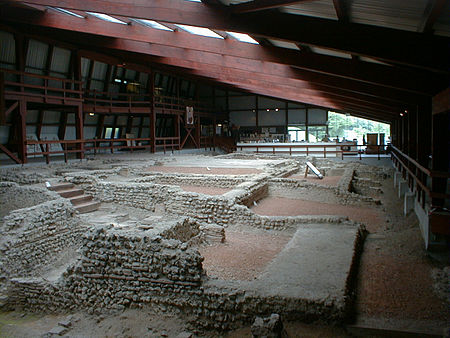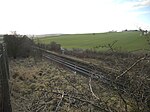Lullingstone Roman Villa

Lullingstone Roman Villa is a villa built during the Roman occupation of Britain, situated in Lullingstone near the village of Eynsford in Kent, south eastern England. The villa is located in the Darent Valley, along with six others, including those at Crofton, Crayford and Dartford. Constructed in the 1st century, perhaps around 80-90 CE, the house was repeatedly expanded and occupied until it was destroyed by fire in the 4th or 5th century. The villa was occupied over various periods within the Romano-British period, but after its destruction, it is only thought to have been reoccupied during the Medieval Times. The occupants were most likely wealthy Romans or native Britons who had adopted Roman customs. Some evidence found on site suggests that around 150 CE, the villa was considerably enlarged and may have been used as the country retreat of the governors of the Roman province of Britannia. Two sculpted marble busts found in the cellar may be those of Pertinax, governor in 185-186, and his father-in-law, Publius Helvius Successus. In the 4th century a room, probably already in religious use, was converted to a Christian chapel or house church, much the earliest known in the British Isles. In the Anglo-Saxon period, the ruins of a Roman temple-mausoleum on the site of the villa were incorporated into a Christian chapel (Lullingstone Chapel) that was extant at the time of the Norman Conquest, one of the earliest known chapels in the country. In addition to the pagan shrine in the villa's chapel and the dining room mosaics, the villa produced significant artistic finds including the Lullingstone Victory Gem and the busts.
Excerpt from the Wikipedia article Lullingstone Roman Villa (License: CC BY-SA 3.0, Authors, Images).Lullingstone Roman Villa
Lullingstone Lane,
Geographical coordinates (GPS) Address External links Nearby Places Show on map
Geographical coordinates (GPS)
| Latitude | Longitude |
|---|---|
| N 51.364 ° | E 0.1964 ° |
Address
Lullingstone Roman Villa
Lullingstone Lane
DA4 0JA , Eynsford
England, United Kingdom
Open on Google Maps










